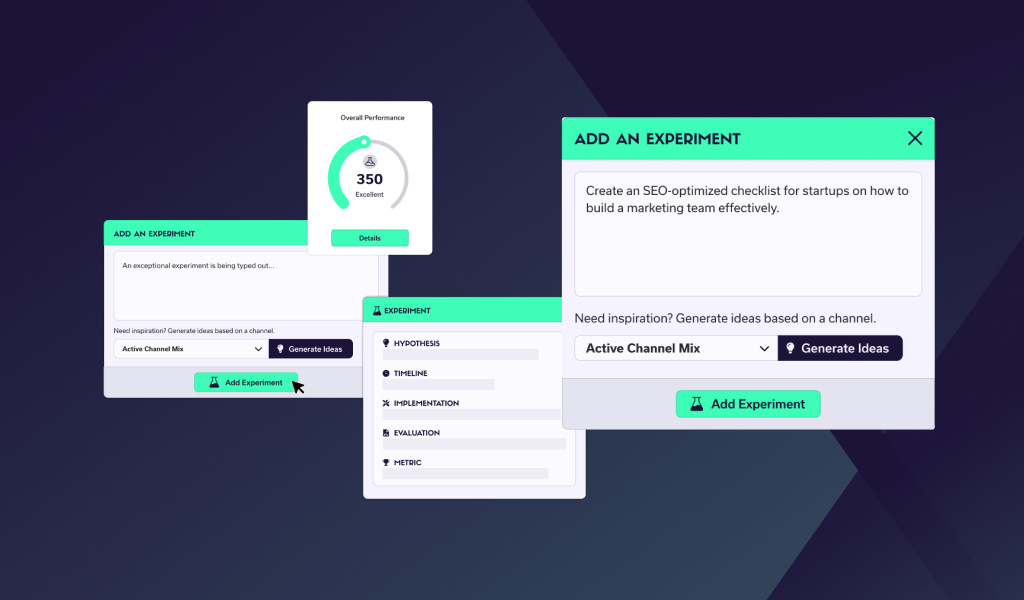When starting a business, so much of your chance of success revolves around your ability to collect, interpret and use data effectively. You need metrics to understand your own performance, the market, the audience and the results of any activities you're doing.
You may have heard before of John Boyd's OODA loop. This is a decision-making framework broken out into core stages: Observe, Orient, Decide, Act. You Observe a situation, gathering information and data. You Orient yourself by interpreting the data and forming a picture of what the situation requires. You Decide what to do about it. And then you Act, before feeding back any learnings to the first stage of a new OODA loop. It's a decision-making framework that originated in the military but is extremely useful in commercial applications.
The reason to mention it is to highlight the first step - Observe. You have to collect information so that you can properly contextualise it and then make decisions. Metrics are one of the most important ways to do that in a business.
What Are Key Metrics?
Key metrics are ways of measuring the performance of key aspects of your organisation. They are data points that call tell you a lot about how well your product is performing in the market, against your competition and in the eyes of investors.
We've previously written a blog highlighting some examples of key metrics for startups. While it does vary from business to business, the ones we've included there are a great starting point. As a reminder the metrics we included were:
1) Revenue. What your sales take is. Clearly, very important for most businesses to track!
2) Customer acquisition cost. How much it cost the business, on average, to win a new customer.
3) Lifetime value. How much a customer is worth to your business of the course of their relationship with you.
4) Payback period. How long it takes a customer to spend as much on your products as it cost to originally acquire them.
5) Churn rate. How many customers stop purchasing from you in a given time period.
6) Gross margin. What percentage of revenue is left after the costs of goods sold is subtracted.
7) Burn rate. Particularly important for startups - it's how quickly you're emptying your cash reserves.
These are all high level metrics for a business. But you may have far more granular metrics as key metrics - for example, organic search rankings, ad click-through-rate or response rate from direct outreach. These could all be vital performance indicators for a business - you just need to make sure you pick the metrics that are most important to you and don't get distracted with 'vanity' metrics which don't actually measure success.
What is The Difference Between Key Metrics and Objectives?
The relationship between metrics and objectives is an important one.
Metrics are a way to measure the performance of the business, or a core aspect of the business.
Objectives are what you want to achieve. Typically, you'd use a metric to measure your performance against an objective. Here's an example:
I want to reduce my overall acquisition costs. Therefore, I may set an objective of generating more organic sales to the business through Google search. I would then use key metrics to measure my performance against this objective:
- Search Engine Ranking Positions (SERPS)
- Organic impressions
- Organic clicks
- Organic users
- Organic sales
In some cases, your objective itself may be to improve a metric. For example, it would be reasonable to set an objective to improve your Lifetime Value. And you may then have other sub-metrics under that to help break down the data, for example:
- Average order value
- Re-order rate
- Churn rate
Whatever your objective, it's important to try to make it SMART. Specific, measurable, achievable, relevant, and time-bound.
There are a lot of different ways to organise all of this. At Growth Division we use something called the OKR framework in order to organise our objectives and key metrics.
What Are OKRs?
OKRs are 'Objectives and Key Results'. We use them with all our clients to ensure measurability and accountability. They keep the team driven, results-oriented and grounded in the commercial requirements of the client's business.
OKRs are what Larry Page and Sergey Brin to ensure Google out-performed its competitors in the early days of search. The OKR framework is a goal-setting methodology, originally created by John Doerr, which links any business objectives you set with results you can use to measure progress. It helps to tie objectives to day-to-day activities and experiments.
Here's how to set an OKR:
You need to think about what you want to prioritise over the next month, quarter or year and be able to describe it as 'I want to X (objective, as measured by Y (key result).
For example, I want to expand our presence in Europe, as measured by brand awareness in Europe, website traffic from Europe, and sales in Europe. Ideally, you'd have firm parameters on your key results - for example, we want to increase website traffic in Europe from 1000 sessions per month to 5000 sessions per month.
The idea is that the objective represents the big goal, and the key results represent the measurable steps you'll take to achieve it. John Doerr suggested it's most effective to hit about 70% of the Key Results you set - if you're hitting more, you're not being ambitious enough with your goal-setting.
How To Use Key Metrics and OKRs
The only reason to use key metrics and OKRs is to improve business performance. Therefore it's pointless to just set up a lot of OKRs at the beginning of the year or quarter and then forget about them.
You need to set up a regular cadence of checking in on them to ensure:
-Staff are aware of, engaged with and motivated by the organisation's OKRs.
-Initiatives and experiments are aligned with the OKRs
-You know whether you're on track or not
How regularly you check in is dependent on the objective. At Growth Division, where most of our objectives are around marketing, we have weekly check-in meetings to discuss key metrics/results. We have monthly reporting sessions to discuss key results and their impact on objectives. And we have quarterly strategic reviews to plan new OKRs and align on the plan to get there.
Talk to a Growth Advisor
We create a clear, focused marketing strategy by combining our expertise with your knowledge of your business.
Trusted by over 130 startups because our unique growth process and team of marketing experts unlock exponential growth











